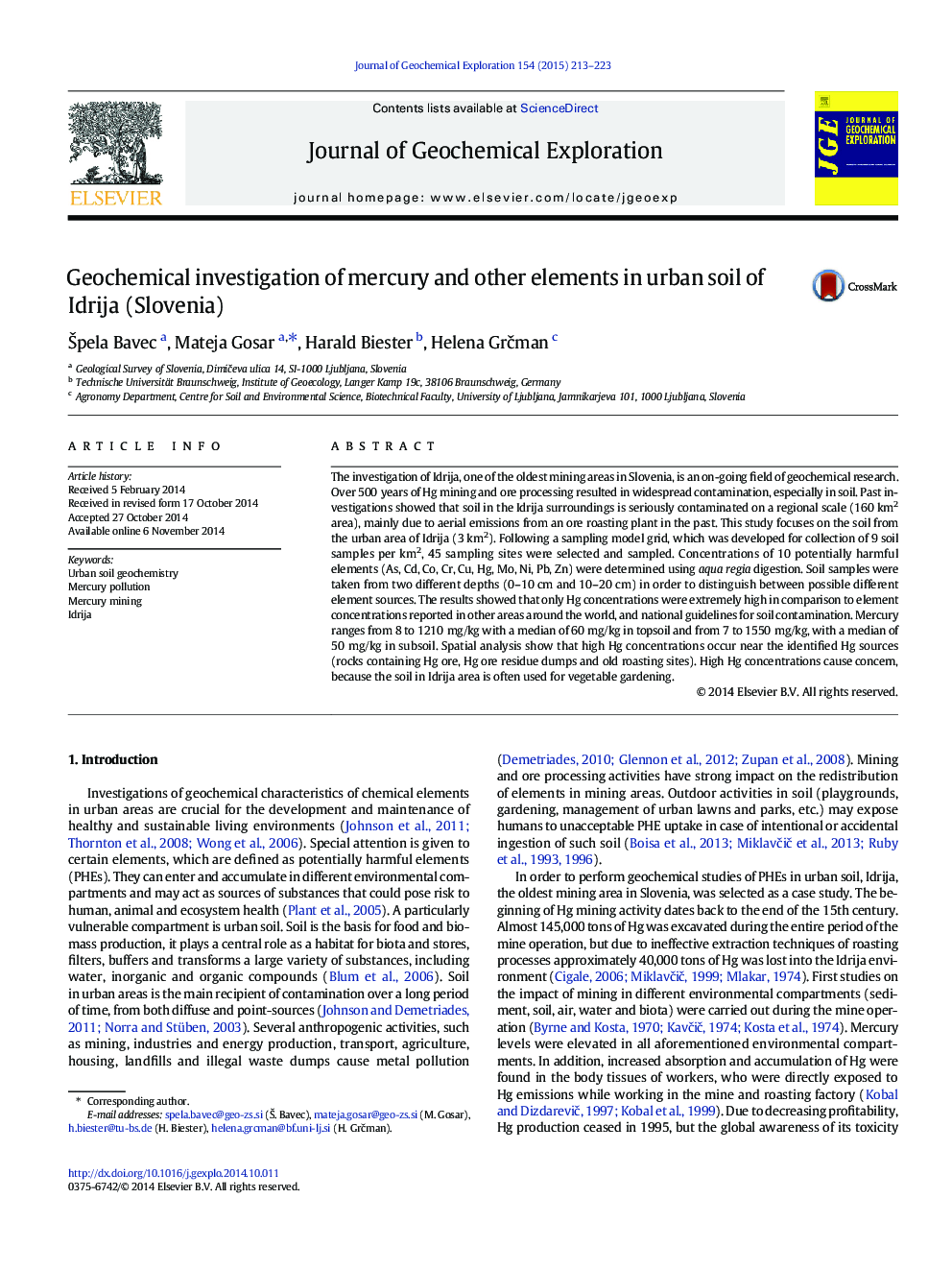| Article ID | Journal | Published Year | Pages | File Type |
|---|---|---|---|---|
| 4457115 | Journal of Geochemical Exploration | 2015 | 11 Pages |
•Systematic soil sampling was performed to investigate element contents•Determination of PHE concentrations in the urban soil of Idrija•Urban soil in Idrija is critically polluted with mercury•PHE, except Hg, are within representative background soil concentrations
The investigation of Idrija, one of the oldest mining areas in Slovenia, is an on-going field of geochemical research. Over 500 years of Hg mining and ore processing resulted in widespread contamination, especially in soil. Past investigations showed that soil in the Idrija surroundings is seriously contaminated on a regional scale (160 km2 area), mainly due to aerial emissions from an ore roasting plant in the past. This study focuses on the soil from the urban area of Idrija (3 km2). Following a sampling model grid, which was developed for collection of 9 soil samples per km2, 45 sampling sites were selected and sampled. Concentrations of 10 potentially harmful elements (As, Cd, Co, Cr, Cu, Hg, Mo, Ni, Pb, Zn) were determined using aqua regia digestion. Soil samples were taken from two different depths (0–10 cm and 10–20 cm) in order to distinguish between possible different element sources. The results showed that only Hg concentrations were extremely high in comparison to element concentrations reported in other areas around the world, and national guidelines for soil contamination. Mercury ranges from 8 to 1210 mg/kg with a median of 60 mg/kg in topsoil and from 7 to 1550 mg/kg, with a median of 50 mg/kg in subsoil. Spatial analysis show that high Hg concentrations occur near the identified Hg sources (rocks containing Hg ore, Hg ore residue dumps and old roasting sites). High Hg concentrations cause concern, because the soil in Idrija area is often used for vegetable gardening.
